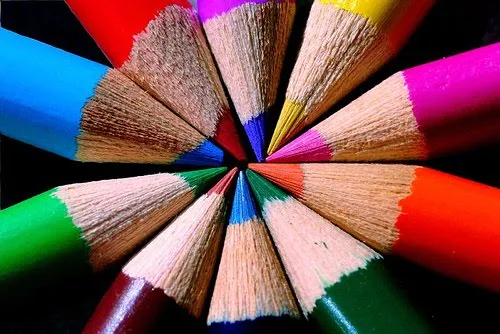
By Sunday O'Brien
As writers we can get caught up in the description of an object. We note size, shape, and every other detail imaginable. The one element that is often lost in the shuffle is color. We say that the cat is black or the water was blue. While those descriptions are entirely acceptable they don’t paint a vivid image for the reader.
Basic color names present two major problems. First, they are bland. Anyone can say the grass is greener on the other side. If you really want to paint a picture for your audience, try the viridian blades of grass bent with the wind, beckoning me to see what lay beyond the fence. Unlike green, the word viridian immediately draws the reader deeper into your world and makes them want more.
The second problem is vagueness. Basic color names leave a lot to the imagination. The woman with blue eyes conjures up limitless images. Is it light blue, dark, or pale? If the woman’s sapphire eyes entranced every man who gazed upon them, the reader is left with a much clearer image of what you meant to portray.
Using more descriptive color names also makes your writing more concise. For example, describing a shirt as dark gray in color is needless. The simple use of the word charcoal eliminates four extraneous words and makes your writing much clearer.
Finding alternate, and more precise, color names is easy. Of course a thesaurus can be a writer’s best friend but it’s okay to think outside the box too. Think of an object that displays the color traits you want to convey and use it as a color name. Try pumpkin for orange, steel for gray, or marigold for yellow. The list that follows provides a good starting point for more descriptive color names. Three alternates along with their definitions follow each common name.
Black
- Ebony: brownish black color
- Charcoal: dark gray color
- Raven: shiny black
- Azure: deep blue
- Sapphire: brilliant blue color
- Indigo: deep purplish blue color
- Russet: reddish brown
- Khaki: brownish yellow
- Coffee: rich brown color
- Ash: silvery gray
- Gunmetal: dark gray color
- Taupe: brownish-gray color
- Chartreuse: yellowish-green color
- Aquamarine: greenish blue
- Viridian: bluish green color
- Tangerine: bright orange color
- Apricot: yellowish orange color
- Peach: orange-yellow color
- Coral: deep pinkish orange color
- Fuchsia: deep pink color
- Magenta: purplish pink
- Mauve: pale purplish color
- Lilac: pale pinkish-purple color
- Amethyst: bluish purple
- Crimson: the color of blood
- Burgundy: deep red color
- Chestnut: reddish brown color
- Pearl: pale grayish white color
- Ivory: creamy white
- Lily: pale
- Gold: rich yellow hue
- Lemon: pale yellow color
- Saffron: bright orange-yellow color
What do you think? Do you often see colors or phrases that seem overused in writing? Let us know!
This post is by Sunday O'Brien, a guest blogger from My Dog Ate My Blog. O'Brien has also written about online colleges for Guide to Online Schools.
Interested in contributing a guest blog post of your own? Check out the guest blogger guidelines.